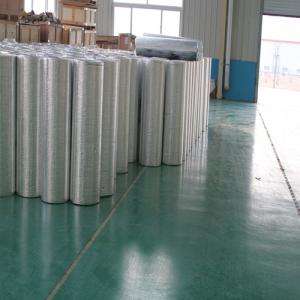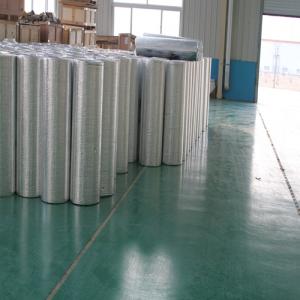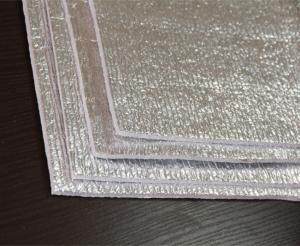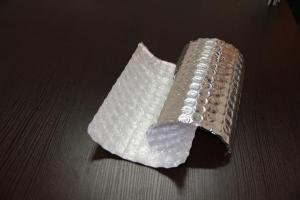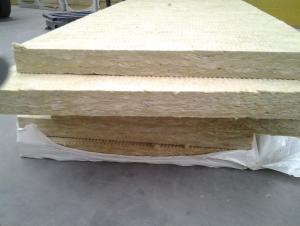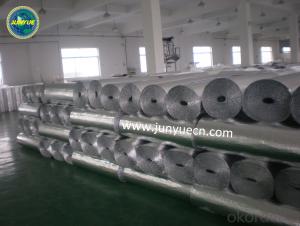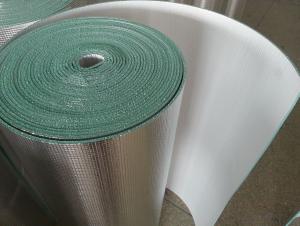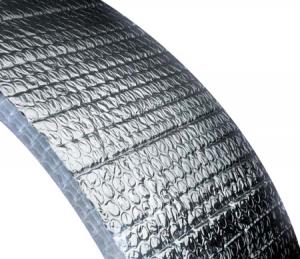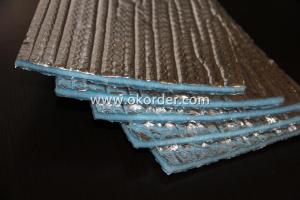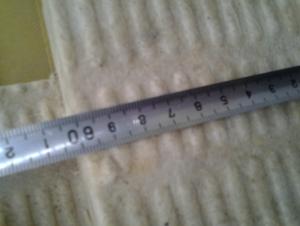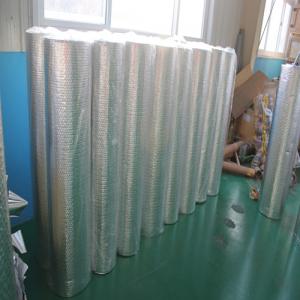Aluminum Foil Composited Bubble Material FBEBF
- Loading Port:
- Tianjin
- Payment Terms:
- TT or LC
- Min Order Qty:
- 10000 m²
- Supply Capability:
- 100000 m²/month
OKorder Service Pledge
OKorder Financial Service
You Might Also Like
Aluminum Foil Bubble Heat Insulation
Description of Aluminum Foil Bubble:
Aluminum foil and bubble is the better product in the environmental protection, thermal insulation thermal insulation. The outermost PET has good abrasion resistance and high strength tear resistance. The bubble between the aluminum foil not only has a strong moisture, resistance oxygen, sound insulation, drop noise function, aluminum foil bubble also has very good reflective inverse heat, blocking ultraviolet.
Features of Aluminum Foil Bubble:
It is the high quality heat insulating and the invincible opponent of anti- condensation. The low and stable coefficient of heat conduction has good isolation effect.
The product has many advantages, such as light weight, heat insulation, shock absorption, sound absorption and noise reduction;
The product is easy to install and process and it also waterproof, seepage control, flame retardant.
The product also has many features, such as heat resistance, low temperature resistance, chemical resistance, ageing resistance etc.
Application of Aluminum Foil Bubble:
Building reflective heat, cold and hot water pipe insulation;
Refrigerator partition, central air conditioning, refrigerator and household appliances insulation;
Insulation, sound-absorbing, noise reduction and moisture-proof insulation in the car, train, refrigerator car, laboratory and other industries;
Special product packaging and refrigerated packing and so on.
Pictures of Aluminum Foil Bubble
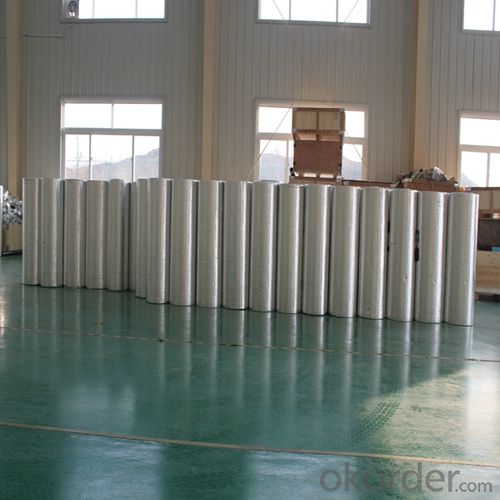
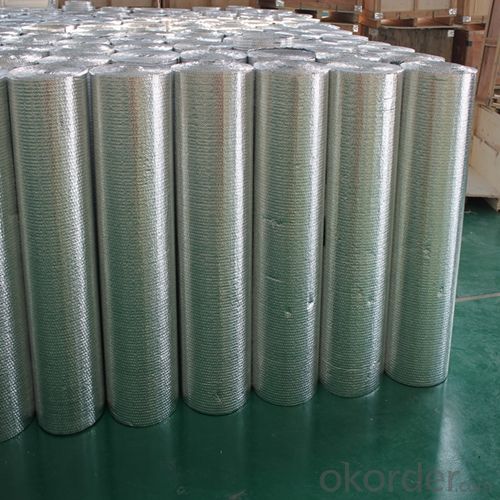
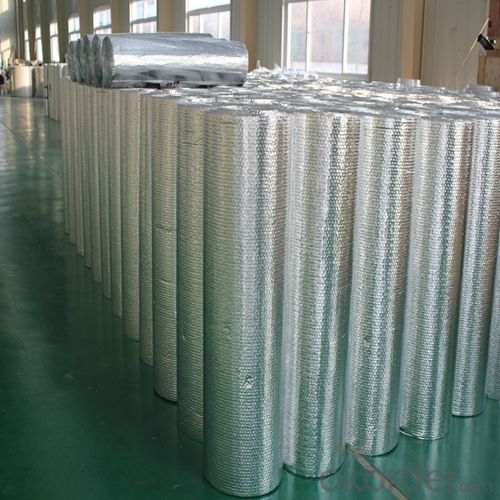
Specification of Aluminum Foil Bubble
STRUCTURE | ALUMINUM FOIL/BUBBLE/ALUMINUM FOIL | ALUMINUM FOIL/ BUBBLE/BUBBLE/ALUMINUM FOIL | ALUMINUM FOIL/WOVEN CLOTH/BUBBLE/WOVEN CLOTH/ALUMINUM FOIL | MPET /BUBBLE/MPET | ALUMINUM FOIL/BUBBLE/FOAM/BUBBLE/ALUMINUM FOIL |
THICKNESS | 1-4mm | 8mm | 6.5mm | 4mm | 4mm |
WEIGHT | 120GSM | 240GSM | 180GSM | 120GSM | 445GSM |
BUBBLE SIZE | 4mm HIGH x 10mm DIAMETER | 2mm HIGH x 10mm DIAMETER | 4mm HIGH x 20mm DIAMETER | 4mm HIGH x 10mm DIAMETER | 2mm HIGH x 10mm DIAMETER FOAM THICKNESS: 3.5MM |
WIDTH | 1.2m (MAX 1.5m) | 1.2m (MAX 1.5m) | 1.2m (MAX 1.5m) | 1.2m (MAX 1.5m) | 1.2m (MAX 1.5m) |
THERMAL CONDUCTIVITY | 0.034w/mo | 0.032 w/mo | 0.032w/mo | 0.034w/mo | 5.87m2.k/w |
REFLECTIVITY | 96-97% | 96-97% | 96-97% | 96-97% | 96-97% |
FAQ
We have organized several common questions for our clients,may help you sincerely:
①How about your company?
A world class manufacturer & supplier of aluminum foil bubble insulation,is one of the large-scale professional investment aluminum foil composite insulation bases in China, consisting of both casting foundry forging and machining factory. Annually more than 100,000 square meters foil insulation are exported to markets in Europe, America and Japan. OEM service available according to customer’s requirements.
②How to guarantee the quality of the products?
We have established the international advanced quality management system,every link from raw material to final product we have strict quality test; We resolutely put an end to unqualified products flowing into the market. At the same time, we will provide necessary follow-up service assurance.
③How long can we receive the product after purchase?
In the purchase of product within three working days, We will arrange the factory delivery as soon as possible. The specific time of receiving is related to the state and position of customers. Commonly 20 to 25 working days can be served.
④What is the storage condition?
The welded wire mesh should be stored at room temperature and kept from wet and heat source.
- Q:Live in Houston, very hot and humid. Looking at adding radiant and additional insulation to roof in house. We have a lot of sun, and AC bills.
- we live in the desert, and got our roof coated, and instantly noticed the difference, it is much more insulated, and provides protection against leak (which was the main reason we had it done)
- Q:I work with rubber roofing insulation. How , other than long sleeves, do I deal with the after effects of being exposed to this insulation.
- The talcum powder and clothing can only do so much. They can be effective, but can still lead to some itching once you are done working on the job. A cold (then warm) shower should be sufficient for clearing out the insulation and taking care of the itching.
- Q:I'd like to put a train set in my loft / attic, so to avoid it being cold in there during the winter I'm considering having no insulation in the floor of it where one usually would, thus allowing the heat to rise into the loft. Then, insulate the roof between the rafters instead. Is this just as good at keeping the heating costs down?
- It will provide some insulation but not as much as you can get by insulating the attic in the normal way. Typically you use very thick batts or blown insulation that can be 12 to 18 inches thick. If you insulate only the rafters you will probably only have 5-1/2 inches of insulation. I think you are going to find the attic with this arrangement pretty cold depending on where you live.
- Q:If I insulate my roof, should I put in those plastic vents that go between the studs for air flow? I would like to use it for a work shop and probibly have some kind of heat source. i live in Northern Alberta.....
- You will normally install both insulation and a vapor barrier, like a house, these go above the ceiling, but NOT the underside of the roof. Yes you should install vents, you need the air movement.
- Q:Can you put fiberglass insulation on the under side of roof tiles in the loft in the house?
- I would be concerned that this may cause moisture to form between the roofing and the insulation. They make a special foam panel that fit underneath the roofing in between the roof rafters. They allow air to flow from the eave to the roof's ridge.
- Q:I have read in some articles about roofing that it is recommended to use attic roof insulation in ones roofing. Is this true?
- here in the uk not only is it necessary ..its the law ..under building control up to 250mm 10" of fibreglass is needed ...it keeps house warm in winter and cool in summer
- Q:We have recently moved into a house in Australia with a tin roof. There is a layer of 5cm batts on the rafters in the roof space, but the temp is 10-15 degrees C higher up there than in the house (with all the windows and doors open). I don't want to get air-conditioning, is there another way to insulate the roof and cool the house?
- like they said ventilation is the answer... you allready have a radiant barrier ( metal roof ), now get the heat out. a rigge vent would be best with plent of open soffit all the way around the perimeter. if you're in a dry climate, a humidifier will work as well as an a/c, but much cheaper! give measurments in feet & inches... what do you thing, some one from france is going to help you?
- Q:The roof does not have fillet under tiles, our house tends to be very cold and we want to remove the insulation and put a knew one, will our house be warm? any tips and advice.thank you for your time
- I was an insulation installer for a time and this is what we did. We never took out old insulation; this is even when we blew it into the walls. We used cellulose wood fiber aka recycled paper preferable news paper and phone books. After the stuff was ground up Borax and Boric acid was added to make it fire proof. This stuff was blown in on top of the old stuff, usually 6 to 8 inches. All you do is have one person in the attic who sits down, with a hose in hand you plow it in and take measurement as you move along to be sure it is the thickness you want. Try to keep it even and smooth (like icing a cake). The other person stands next to the blower, which is place outside our in the garage (ours was in the back of a truck). This person must keep the hopper full and walk from the blower to the attic to physically look at you for safety reasons. Both must were face mask over your mouth and nose, you may want to wear goggles as well. I didn’t like goggles because they fogged up. Before you start work out emergency calls and other communication. We did this by turning the blower on and off with the remote switch (which you must have in the attic). If you take the square footage of your attic to the store the sales person can tell you how much you need. This info use to be on the back of the bag and it is easy to do. Make sure you have the correct number of roof vent for the square footage of your space. Have a fun time doing it and it will be over in no time! The blowers may have the formula to figure how much you can do per square foot per hour. This will let you budget your time better, remember that formula is usually how much can be blown per hour; the other task will eat into that time frame. To do the side walls is a bit more involved, but if you need help with that as well I would be glad to tell you the details.
- Q:do i have to have insulation in my roof?
- Maybe, you do need insulation above the ceilings (it will be between the ceiling joists/framing that also serve as the attic floor joists/framing. 1. If you have a finished attic (for a living area of some sort) then yes there should be insulation with a vapor barrier under the roof &/or between the roof framing. This will help keep heating/cooling costs down and prevent condensation from forming under the roof and doing lots of water damage over time. 2. If the attic is partially finished but used for storage only & there is attic ventilation in use also then no you don't need insulation under your roof. 3. If your attic is partially finished or completely finished but used for storage only and there is no attic ventilation then yes you should have insulation with a vapor barrier also under the roof. You don't have to have it since it's used for storage only but if you start to see condensation &/or wet areas on the wood or framing under the roof then you will need insulation with a vapor barrier installed. If for any reason insulation is installed under the roof it must be installed correctly and have in place a proper method of ventilation directly under the roof itself. All roof systems in the attic areas must have proper ventilation to prevent any possibility of condensation forming under &/or in the wood roof framing & sheathing materials that will rot the wood over time.
- Q:A roofer who wants to put a new roof on my mobile home says it will dry out. (We live in the rainiest part of the US)
- It shouldn't need replacement unless it is damaged someway.Like mold,dry rot or UV Damage.He should be willing to explain why and show you the condition of the roof before and after he works on it.
1. Manufacturer Overview |
|
|---|---|
| Location | |
| Year Established | |
| Annual Output Value | |
| Main Markets | |
| Company Certifications | |
2. Manufacturer Certificates |
|
|---|---|
| a) Certification Name | |
| Range | |
| Reference | |
| Validity Period | |
3. Manufacturer Capability |
|
|---|---|
| a)Trade Capacity | |
| Nearest Port | |
| Export Percentage | |
| No.of Employees in Trade Department | |
| Language Spoken: | |
| b)Factory Information | |
| Factory Size: | |
| No. of Production Lines | |
| Contract Manufacturing | |
| Product Price Range | |
Send your message to us
Aluminum Foil Composited Bubble Material FBEBF
- Loading Port:
- Tianjin
- Payment Terms:
- TT or LC
- Min Order Qty:
- 10000 m²
- Supply Capability:
- 100000 m²/month
OKorder Service Pledge
OKorder Financial Service
Similar products
New products
Hot products
Related keywords
